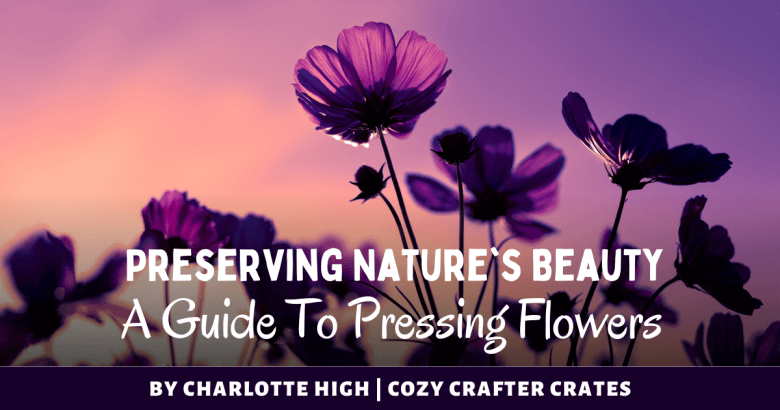By Charlotte High of Cozy Crafter Crates
Pressing flowers allows us to capture nature's beauty in lasting form. Whether for decoration, crafting, or scientific study, pressed flowers retain their delicate details for years to come.
In this guide, we'll explore various methods for pressing flowers, so you can preserve your favorite blooms.
Pressing Flowers
Begin by selecting fresh flowers with vibrant colors. Your flowers should be free of any holes, marks, or blemishes.
Pick your flowers around midday, after the sun has dried the petals naturally. Wet flowers and plants can become moldy and deteriorate easily, making them unsuitable for pressing.
Keep an eye out for flowers that have recently bloomed and look fresh. It is best to choose flowers with flat petals and thin single layer flowers.
Flowers with thicker petals or high water content may not press well or lose their shape. If you have picked any plants that are round, you can cut them in half to make them easier to flatten.
Trim any loose leaves away from the flower so that they do not get pressed into the petals. If the stem is larger or thicker than the flower, you will have better results if you remove the stem.
Traditional Pressing:
1. Arrange the flowers on absorbent paper, such as blotting paper or printer paper if blotting paper is not available. Place them exactly how you want them to look when dried and make sure that none of the flowers overlap.
2. Put another piece of paper over top. Put your papers inside the pages of a heavy book. Choose a book that you don’t mind if the moisture from the flower bleeds onto the pages.
3. Close the book and stack additional weight on top to apply pressure.
4. Leave the flowers to press for 1-3 weeks in a cool, dry place. It may be tempting to peek at them during this time, but disturbing them could cause the flowers to tear.
Microwave Pressing:
This method offers a quicker alternative to traditional pressing.
1. Place the flowers between two sheets of absorbent paper.
2. Place a flat-bottomed microwave-safe glass plate or dish on top to act as a weight.
3. Microwave in short intervals, typically 30 seconds to 1 minute, until the flowers are sufficiently pressed. Be cautious not to overheat and scorch the flowers.
4. Allow the pressed flowers to cool before handling them.
Iron Pressing:
Another rapid and easy method for pressing flowers involves using an iron. You can see
the flower as you are ironing and control the heat directly.
1. Arrange the flowers between two pieces of parchment paper and put them between pages of a heavy book to begin flattening them. While your flowers flatten, heat your iron on low heat.
2. Gently move your pieces of parchment paper to the ironing board and carefully press the iron over the parchment paper for 10-15 seconds, applying light pressure.
3. Check the flowers to ensure they're adequately pressed, repeating the process if necessary.
Enjoy The Beauty Of Nature
Whichever method you choose, pressing flowers offers a delightful way to preserve nature's fleeting beauty.
Use your pressed flowers to make personalized artwork, or craft unique gifts such as handmade cards and bookmarks.
You can even decoupage them onto vases and candle jars. Your pressed flowers will remain a cherished keepsake for years to come.
So, the next time you are on a nature walk, gather your favorite blooms and try one of these techniques to preserve the beauty of the natural world.
Read More!
- Log in to post comments






